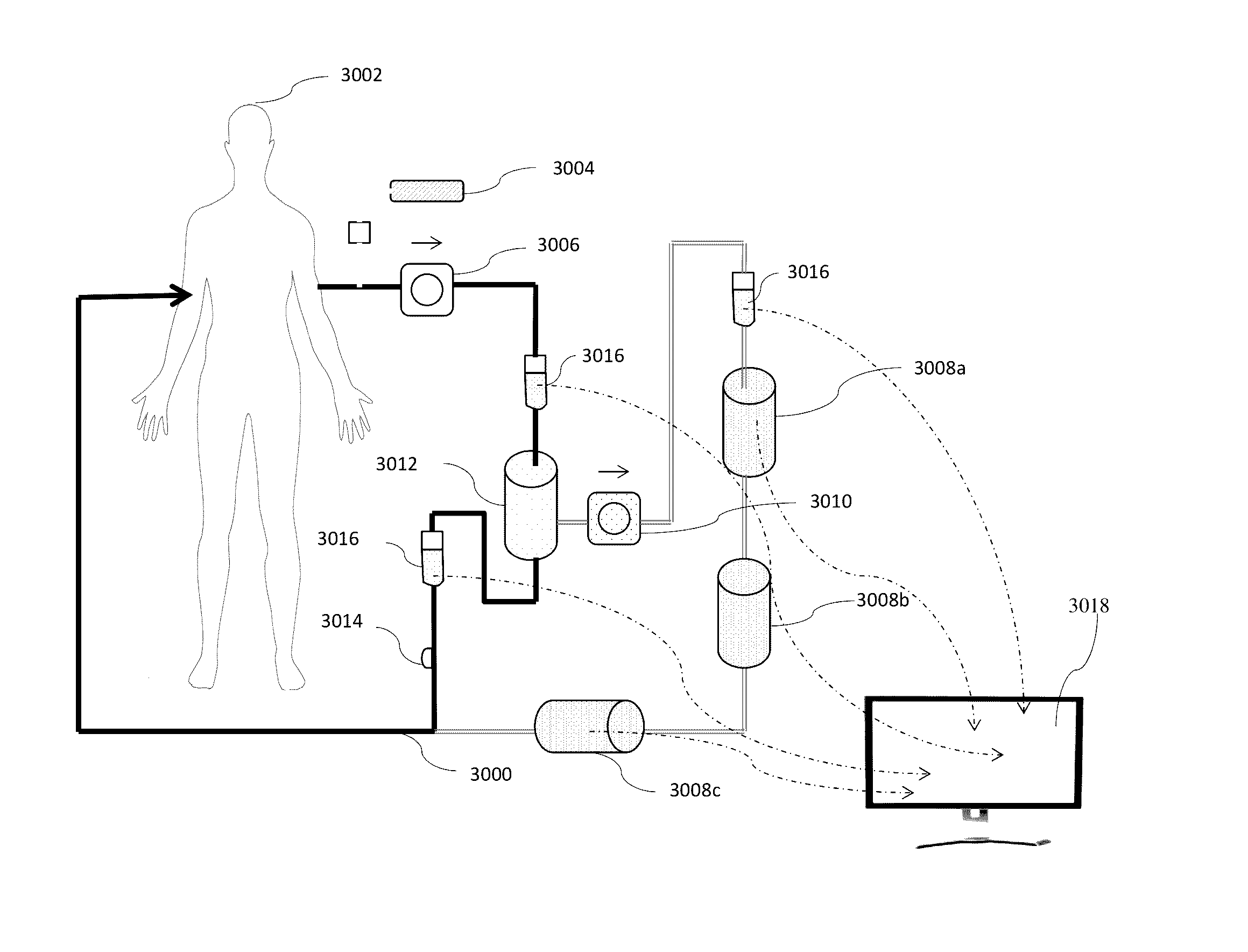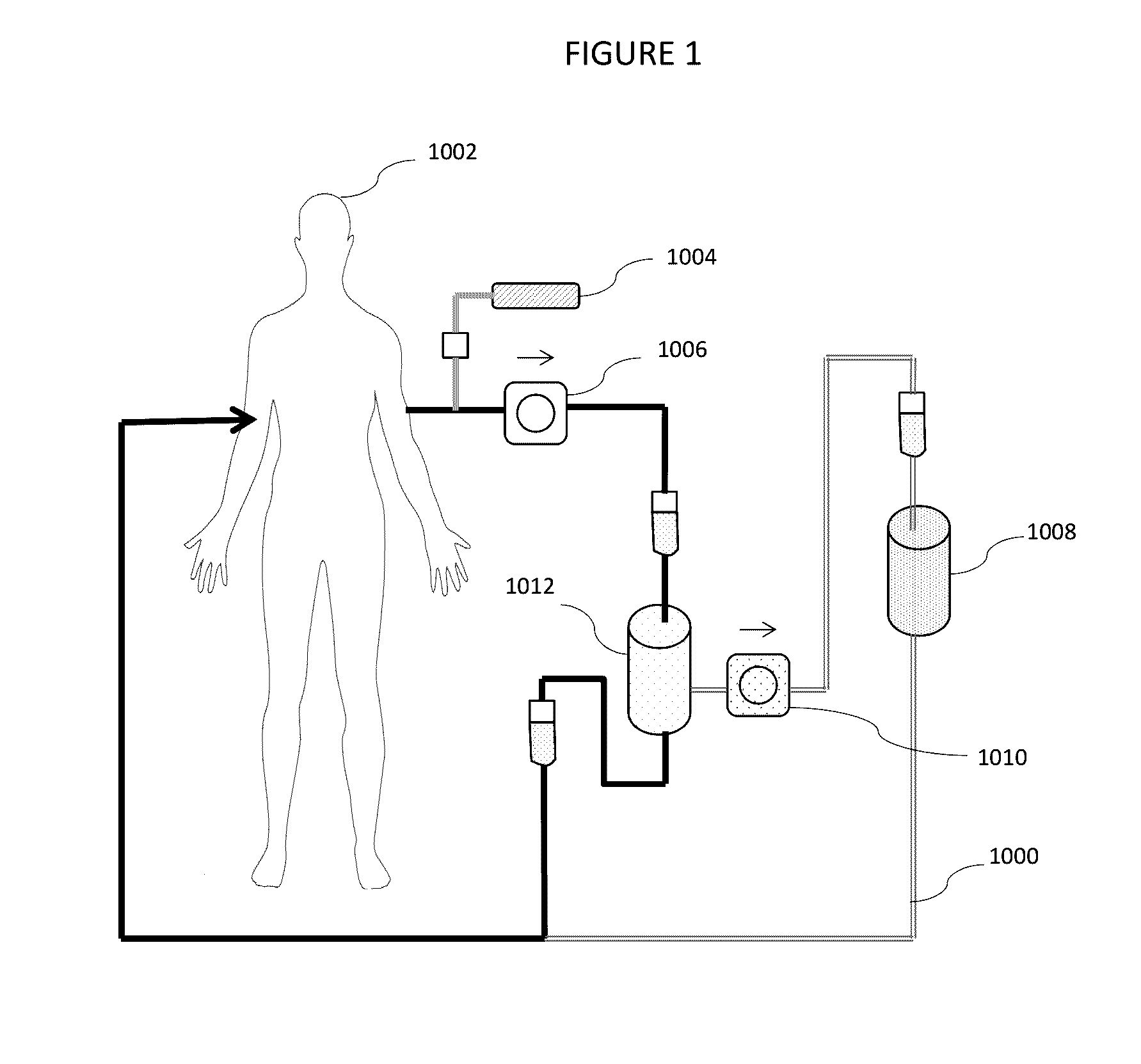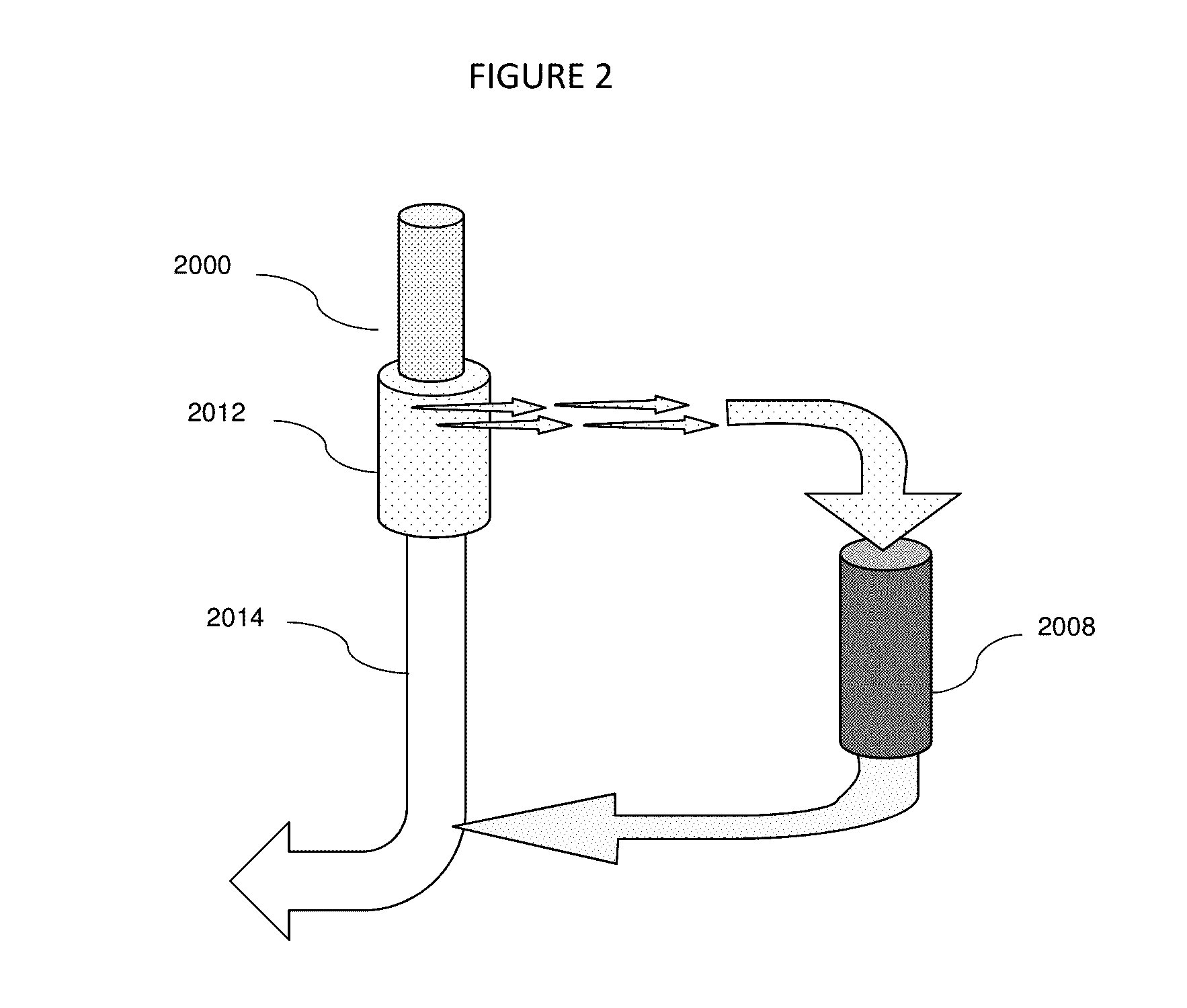Apheresis based treatment for kidney disease
a technology of kidney disease and apheresis, applied in the field of apheresis based treatment of kidney disease, can solve problems such as frustration or limitation, and achieve the effects of reducing the rate of fibrosis, preventing fibrosis, and preventing fibrosis
- Summary
- Abstract
- Description
- Claims
- Application Information
AI Technical Summary
Benefits of technology
Problems solved by technology
Method used
Image
Examples
Embodiment Construction
[0021]This invention introduces a new method of addressing CKD and AKI through aggressive control of Gal-3 systemic levels by apheresis. Fundamentally, whether using the device of this application illustrated in the Figures described above or an alternative device which selectively removes a specific agent from the blood, this invention relies on withdrawal of substantial amounts of Gal-3 from the blood of a patient suffering from CKD or AKI. Thus, whether whole blood is treated directly or plasmapheresis is practiced where the red blood cells are removed and plasma is then treated before being returned to the body, the patient's fluid is removed from the body. It is then passed through one or more modules where an agent which selectively binds galectin-3 is provided. In many cases, this will be an antibody or antibody fragment, but in other cases, a peptide or saccharide tailored to selectively bind to Gal-3 may be employed. In addition to the selective removal of Gal-3, additional...
PUM
 Login to View More
Login to View More Abstract
Description
Claims
Application Information
 Login to View More
Login to View More - R&D
- Intellectual Property
- Life Sciences
- Materials
- Tech Scout
- Unparalleled Data Quality
- Higher Quality Content
- 60% Fewer Hallucinations
Browse by: Latest US Patents, China's latest patents, Technical Efficacy Thesaurus, Application Domain, Technology Topic, Popular Technical Reports.
© 2025 PatSnap. All rights reserved.Legal|Privacy policy|Modern Slavery Act Transparency Statement|Sitemap|About US| Contact US: help@patsnap.com



